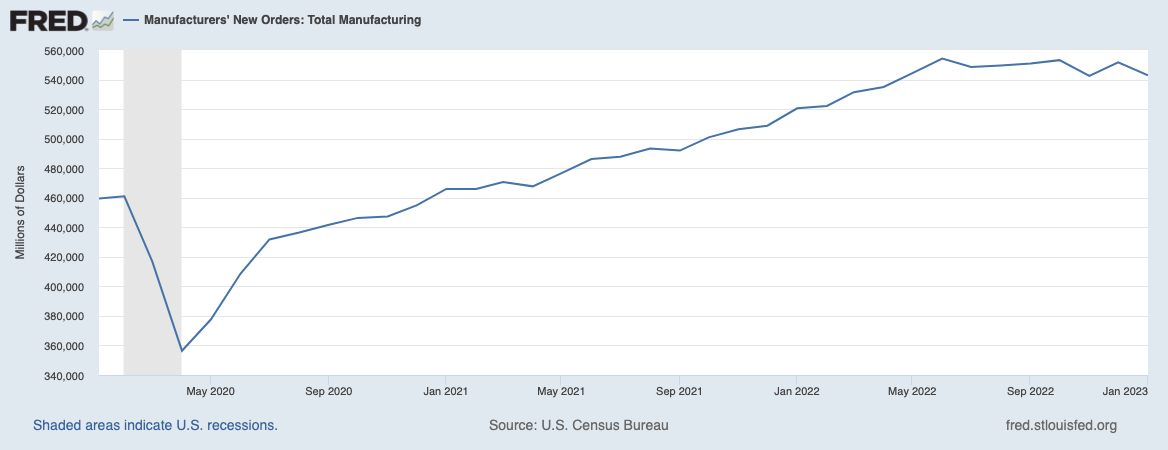Higher Interest Rates Reduced Exports
Weaker manufacturing data could indicate that consumers and businesses are becoming more cautious in the midst of economic uncertainty. A decline in manufacturing could signal trouble for the wider U.S. economy, as it has historically been an early predictor of recessions, even though it only accounts for 11% of GDP.
- Manufacturing orders have decreased for six months in a row according to the Institute for Supply Management's surveys
- Manufacturing output has also declined 1.7% from its post-pandemic high in May 2022
- The Commerce Department's measure of civilian capital equipment orders, excluding aircraft, has decreased 3.4% in January after adjusting for inflation

“As the Fed continues to hike, manufacturing is going to be in the crosshairs, [...]. It’s hard to see this sector not suffer some sort of a downturn that is more significant than what we’ve seen already.” Jonathan Millar, senior U.S. economist at Barclays PLC
Fed May Increase Interest Rates Beyond Prior Expectations
The Fed's attempt to curb inflation through frequent interest rate hikes has resulted in higher borrowing costs for significant purchases like household appliances or business machinery.
- In early February, the Fed raised its benchmark rate to the highest level since 2007
- There are indications that rates may increase again during their upcoming meeting as inflation increased in January as Federal Reserve Chair Jerome Powell reiterated his message of potentially faster interest rate hikes
- But he also emphasised that a decision had not yet been made and would depend on upcoming data
Speaking to the U.S. House of Representatives Financial Services Committee, Powell stated, "If - and I stress that no decision has been made on this - but if the totality of the data were to indicate that faster tightening is warranted, we would be prepared to increase the pace of rate hikes." He further noted that the March 21-22 meeting would consider jobs data and inflation data to determine whether a shift in rate hikes was necessary. Powell acknowledged the Fed's initial error in assessing inflation as only temporary and expressed surprise at the labor market's behavior during the COVID-19 recovery.
Disclaimer
Please note that this article does not constitute investment advice in any form. This article is not a research report and is not intended to serve as the basis for any investment decision. All investments involve risk and the past performance of a security or financial product does not guarantee future returns. Investors have to conduct their own research before conducting any transaction. There is always the risk of losing parts or all of your money when you invest in securities or other financial products. Please note that the writer of this article is not registered as a financial advisor.
Credits
Photo by ThisisEngineering RAEng on Unsplash






